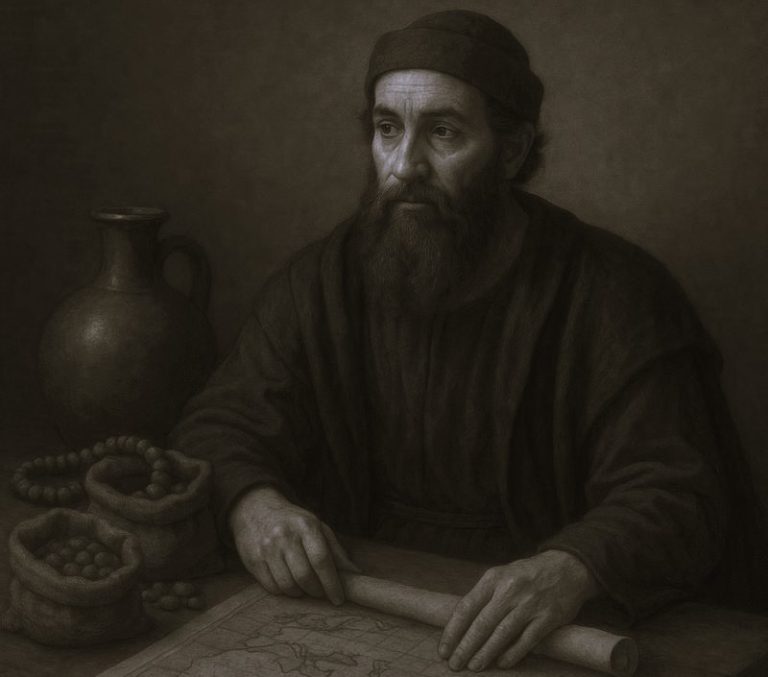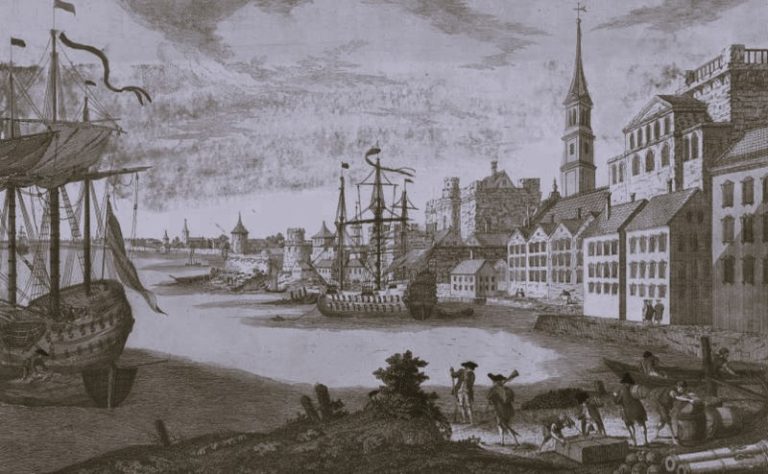
A history of the idea of Open Educational Resources and overview the current state of the Open Educational Resources movement.

By Dr. David Wiley
Adjunct Professor of Education
Brigham Young University

By Dr. Seth M. Gurell
Director, Teaching and Learning Design
Utah Valley University
History
Introduction
Histories are difficult to write for many reasons. One reason is the difficulty of determining where to begin telling the story – for there is never a true starting point to a tale woven of people, events and ideas. And just as every historian reifies his or her bias through choices of the origin and events to be included in the telling, we freely admit that in this article we see the history of Open Educational Resources (OER) through the lens of copyright law and open licences. Other perspectives on the history of OER (as an outgrowth of the learning objects movement, for example) may also be justifiable. But this story is set in an atmosphere of ambient copyright, a time in which every creative work is assigned copyright automatically to the full extent of the law, as soon as it is fixed in a tangible form, a world where sharing copies of things is illegal by default. When the law makes it illegal to help your neighbour, you know a movement is beginning.
Free Software
Richard Stallman’s vision for free software began with a printer jam when he was working as a staff programmer at the Massachusetts Institute of Technology (MIT) Computer Science and Artificial Intelligence Laboratory. The laboratory had recently received a new Xerox printer that broke down frequently. Stallman had been able to programme a work‐around for the previous printer to make programmers aware of a paper jam. When the new printer jammed, Stallman found someone who had developed the Xerox printer and asked for the source code so he could make the same change. The developer refused, citing an agreement with Xerox that prohibited him from sharing the source code. Infuriated, Stallman vowed to keep his software free. He later founded the GNU Project and the Free Software Foundation (Williams, 2002).
While he wrote prolifically about freedom as a matter of principle, the document around which Stallman’s troops rallied was the GNU Public Licence (GPL). The GPL (now in version 3) is a legal document that grants users of software a number of permissions that copyright law denies by default, including permissions to make and share exact copies of software programs, to revise programs and to share these revised copies. The exact number of GPL‐licensed projects is unknown, but at least 29,000 projects on the popular open source site Freshmeat.net use the GPL (SourceForge Inc., 2008).
Open Source Software
By 1997 the concept of ‘free software’ was viewed with mixed feelings. The success of free software programs such as Sendmail and Apache, which were running the majority of email and web servers on the Internet, was undeniable. There could no longer be an argument as to whether the free software development approach could result in a quality product. But some in the community worried that Stallman’s rhetoric was restraining the growth of the movement. Stallman argued zealously for freedom in software, sometimes implying that those who disagreed with him were without principle. The attitude of some people towards free software began to sour. Furthermore, despite the manifest success of this approach to software development, businesses were extremely uncomfortable with the word ‘free’, and were having a hard time embracing the movement.
In early 1998 a group of people, including Eric Raymond (author of The Cathedral and the Bazaar) and Bruce Perens (author of the Debian Free Software Guidelines), held a strategy meeting. They determined to establish a new brand, with a new name and message, to arrest what they saw as a harmful downward spiral in public relations. They chose the term ‘open source software’ for the new brand and positioned the message pragmatically, as a story of the practical benefits of the open source approach:
| • | Just as peer review of academic papers creates a culture of scientific rigour, openness in software increases its quality. |
| • | Just as greater transparency in government leads to greater accountability, openness in software increases its security. |
| • | Allowing others to contribute features to your software product makes the product better at a fraction of the cost to you. |
Where Stallman’s message that software should be free because it should be free appealed to a small but vocal minority, Raymond and his colleagues sought to reach the rest of the world with their message of the practical benefits of openness. The group did not create a new licence, but instead established the Open Source Definition and an accompanying process by which licences like the GPL could be judged to determine whether they provided all the permissions necessary for the benefits of openness to operate. The Open Source Definition includes requirements that software be freely distributed, that distribution of source code is permitted, that the creation of derivative works be allowed, and that the licence not discriminate against any person, group, or field of endeavour. A thorough overview of what qualifies something to be ‘open source’ can be found at www.opensource.org/docs/definition.php. Licences that meet the terms of the open source definition are ‘Open Source Initiative (OSI) approved’. There are currently 71 OSI approved licences (Tiemann, 2006).
Open Content
In 1998 David Wiley, then a graduate student studying reusable educational materials – or ‘learning objects’ – determined to follow the example of Raymond and colleagues and create a new brand with a new message. ‘Open content’ was an attempt to apply the pragmatic arguments made in favour of open source software to educational materials and other content, including scholarly research, music, literature and art. Wiley released the OpenContent Licence in 1998, which was based heavily on the GPL, and began to advocate openness in creative works, based on the practical benefits openness would bring in education and other areas.
In collaboration with Raymond, publisher Tim O’Reilly, and others, Wiley released the Open Publication Licence (OPL) in 1999. The licence was structured differently from the GPL. While the OPL granted users permission to make copies, redistribute, and revise OPL‐licensed material, it required users to attribute the original author(s), and included additional clauses a licensor could opt to invoke. One option prohibited commercial use of the content in printed form (thus allowing publishers like O’Reilly to publish books such as Raymond’s The Cathedral and the Bazaar without fear of being undercut by other publishers). The other option prevented users of open content from revising or making changes to the materials. The OPL was widely and rightly criticised for not providing a clear, concise way for licensors to indicate which of these options they had elected to invoke. Websites frequently sported a button indicating that page content used the OPL, but only occasionally did website owners add required language to indicate which licence options they had chosen to invoke.
Creative Commons
Larry Lessig (then Berkman Professor of Law at Harvard Law School) and others founded Creative Commons in 2001, an organisation dedicated to promoting open content. The Creative Commons licences, first released in late 2002, included three elective clauses:
| 1. | An option requiring attribution of the original author when reusing the material. |
| 2. | An option prohibiting commercial use of the material. |
| 3. | An option either prohibiting the creation of any derivative works, or allowing the creation of derivative works as long as these derivatives were re‐licensed under the same licence. |
Since the second version of the licences, attribution has been changed to a requirement rather than an option, giving the Creative Commons licences the same high‐level structure as the OPL – requiring attribution with options prohibiting commercial use and the creation of derivative works.
Creative Commons overcame the criticisms of the OPL by providing a wizard‐like interface for choosing licence options and separate licences with communicative names that let users quickly understand which options the licensor had selected. In mid‐2003, Wiley began recommending that OPL users switch to a Creative Commons licence. The Creative Commons licences are now the default licence for OER, with over 90 million licensed objects available through Flickr and Yahoo! search results alone (Creative Commons, 2008).
Once the idea of open content had been developed and promoted, and easy to use open licences had been created, there began a very significant amount of activity. The examples described below will provide the reader with an overview of the scope and level of effort being made.
An Overview of Some Open Education Projects
Internet Archive

The Internet Archive was born out of a concern for the growing amount of valuable material that exists in digital form only and might, therefore, disappear without being archived for future generations to access and study. As it has gained popularity, contributors have been invited to upload and preserve a variety of material in the Internet Archive. Special collections of hard‐to‐access media have been added as well; most notably the Prelinger Archive, which contains advertising, public service announcements and instructional videos created between 1927 and 1987. Although much of the material on the site is in the public domain, some material is licensed with a Creative Commons licence. Currently, the Internet Archive has 119,329 moving images, 49,867 concerts, 263,023 audio objects and 421,948 texts (Internet Archive, 2008).
Connexions

Originally called the ‘Secret Web Initiative’, Connexions started in October 1999. The idea behind Connexions was to create a series of self‐contained, reusable modules that could be connected in a myriad of ways to form lessons or entire courses. The Connexions site opened to the public in 2000 with 200 modules in the repository. In 2002 Connexions adopted a Creative Commons licence for its modules and received a substantial grant from the William and Flora Hewlett Foundation.
Over the next few years, as Connexions grew rapidly, an increasing emphasis was placed on the ability to combine modules into books – not only online books, but ‘real’ books that could be automatically formatted by the system and sent to a printer. At a time when many university presses were hard pressed to remain operational, Rice University Press partnered with Connexions and adopted print‐on‐demand technology, releasing their first book on the platform in 2006 – ‘Art History and Its Publications in the Electronic Age’ (Evans, 2006). Finally, in 2007 ‘lenses’ were introduced to the system to allow individuals and organisations to focus other users’ attention on materials they have reviewed and rated as high quality. Lenses are a critically important mechanism for the self‐managing Connexions community to make public assertions about the quality of Connexions materials (Connexions, 2007).
Connexions currently contains over 5400 modules and content in several languages, including Chinese, English, Italian, Japanese, Portuguese, Spanish and Thai (Connexions, 2008).
Nupedia/Wikipedia

Nupedia was the brainchild of Jimmy Wales and Larry Sanger, and the history of who deserves credit for which parts of the vision is hotly contested. Nupedia was intended to be a free encyclopaedia to which experts could contribute. Unlike Wikipedia, Nupedia required a seven‐step editorial process to generate an article. The budding open content encyclopaedia was meant to ‘out‐Britannica Britannica’ (Gouthro, 2000). Originally, Nupedia was licensed with the Nupedia Open Content Licence (a derivative of the original Open Content Licence), but it later switched to the GNU Free Documentation Licence. Nupedia was launched on 9 March 2000.
The development of articles for Nupedia proved to be slow and time‐consuming. After roughly a year, there were less than 30 articles. To help facilitate the production of new articles, Wales and Sanger set up a wiki. On 15 January 2001 ‘Wikipedia’ was launched. Although the intention was to have Wikipedia content feed into Nupedia, the growth rate of Wikipedia was so rapid that Nupedia soon became neglected and was discontinued.
Wikipedia has become one of the Internet’s most popular sites, with over 1.5 million articles. A further 1000 articles are added every day in over 250 languages (Wikipedia, 2008).
William and Flora Hewlett Foundation

In 1939 Bill Hewlett, educated at MIT and Stanford, co‐founded the Hewlett‐Packard Company with Dave Packard. In 1967, the William and Flora Hewlett Foundation (a family foundation not to be confused with Hewlett‐Packard) was formed, supporting projects ranging from environmental restoration to the performing arts (Gardner, 2008). In 2002, the Hewlett Foundation began exploring ways to improve education through increasing access to educational materials. The Hewlett Foundation has since become the primary philanthropic funder of OER projects in the United States, and a premiere funder of these projects worldwide. As of February 2007 the Foundation had invested over US$68 million in open education projects and institutions involved in OER (Atkins, Seely Brown, & Hammond, 2007).
MIT OpenCourseWare

Looking for ways to sustain its reputation for innovation and leadership in the Internet age, MIT briefly considered becoming involved in online education. Instead, a group of faculty came up with the idea of using the Internet to give away its course materials as open content.
In 2002 the pilot site was launched, containing 50 courses. An official MIT OpenCourseWare site was launched in 2003 with 500 courses. While some faculty were initially reluctant to participate, citing intellectual property issues and a potential loss of revenue, participation in the initiative was made voluntary and the project moved forward. Translations began, including a massive effort to translate materials into Chinese. By 2007 there were 1800 courses, and currently about 200 courses are updated or added each year (MIT OpenCourseWare, 2008a). Over 40 million people have visited MIT OpenCourseWare from countries around the world, with 49% (19.6 million) identifying themselves as self‐learners, 32% (12.8 million) as educators and 19% (7.6 million) coming from other groups (MIT OpenCourseWare, 2008b).
Flickr

As happens with many popular websites, Flickr started life largely by accident. Caterina Fake and Stewart Butterfield developed an online game within which a tool had been developed for sharing photographs. The tool proved enormously more popular than the game, which was eventually scrapped. Fake and Stewart launched the Flickr website in June 2004. Flickr became so popular that it drew the attention of search engine giant Yahoo!, who acquired it in March 2005. Earlier in its history Flickr added a Creative Commons option to photograph uploads. By 2006, 22 million photos on Flickr carried one of the Creative Commons licences (Glaser, 2006). Today, there are over 66 million photographs licensed with a Creative Commons licence (Flickr, 2008). Although Flickr is not a collection of material designed explicitly to support teaching and learning, it is a treasure trove of openly licensed photographs, which may be useful in a variety of educational settings.
Flickr has recently expanded beyond Creative Commons licences, announcing in January 2008 that the Library of Congress had agreed to upload 3000 public‐domain photographs to Flickr as part of a pilot project. It is unknown whether the project will continue and make available all 14 million photographs housed by the Library of Congress (Shankland, 2008).
WikiEducator

Given the popularity of Wikipedia, it was inevitable that others would use the Media‐wiki software to create an education‐specific online community. As is often the case, Wayne Mackintosh, then an Associate Professor at the University of Auckland, could not find a website that matched his vision. He therefore created WikiEducator as a means of creating, distributing and promoting OER. The website went live in May 2006 and is currently supported by the Commonwealth of Learning.
Although at first glance WikiEducator might appear to be similar to Wikimedia projects, there are some important differences. First, for optimal compatibility with other OER, WikiEducator uses the Creative Commons Attribution Share Alike licence as opposed to the GNU Free Documentation Licence of Wikipedia. Second, in January 2008 WikiEducator began to experiment with embedding video, using a service called Kaltura, which allows anyone to contribute to a video in a wiki‐like manner. There are currently over 60 organisations or projects on WikiEducator representing nations throughout the world (WikiEducator, 2008). WikiEducator currently has over 4000 users, and 8000 files spread over 6000 articles improved with more than 150,000 edits (Schlicht, 2008).
Cape Town Open Education Declaration

The Cape Town Open Education Declaration had its beginnings at a September 2007 meeting convened by the Open Society Institute and the Shuttleworth Foundation. Approximately 30 members of the OER community participated in a meeting and post‐meeting distributed writing exercise to produce ‘a statement of strategy and a statement of commitment’ on OER specifically, and the idea of open education more broadly (Cape Town Open Education Declaration, 2008a). The Declaration calls on educators, learners and organisations to share their educational materials freely and openly, to make use of OER, and to create incentives for participation in the movement. The declaration states that ‘taxpayer‐funded educational resources should be open educational resources’. By late 2008 the declaration had been signed by over 1600 individuals and 160 organisations (Cape Town Open Education Declaration, 2008b).
Challenges Facing the Open Education Movement
Despite the momentum of the open education movement, a number of hurdles remain for open education to achieve the impact its promoters envision.
Economic Sustainability
Several open education projects have struggled to find start‐up funding, used grant funding to support core operations, and then been forced to close their doors when that funding ended. A core question for the open education field continues to be ‘how to provide ongoing, sustainable resources to support a project whose main activity is giving things away for free?’ Downes (2006) outlines a number of possible sustainability models for open source software or open education projects, which are worth summarising here:
| • | Endowment model – a project raises significant base funding, then uses the interest earned on those funds to pay the operating costs of the project. The Stanford Encyclopedia of Philosophy uses this model to generate its US$190,000 operating budget. |
| • | Membership model – interested organisations join a consortium, to which they contribute seed money, or an annual subscription. In return, those organisations are granted a set of privileges. These may include early access to the new products or services, or access to an enhanced range of services. The Sakai Educational Partners Program, for example, functions on this model. |
| • | Donations model – a project requests donations from its community of users. The funds received are managed by a non‐profit foundation, which may either use them for operating expenses or establish an endowment. Many open content projects are funded chiefly or in part through donations, including Wikipedia and MIT OpenCourseWare. |
| • | Conversion model – users are initially given a product or service for free, in the hope that they will be converted in time into a paying customer. Alternatively, users are given a free basic product, but pay for advanced services; for example, installation and support in the case of commercial Linux distributions. In the educational community, the conversion model has been taken up by Elgg and the Learning Activity Management System. |
| • | Contributor‐pay model – adopted by some open access initiatives, such as the Public Library of Science, as the name suggests, a content contributor covers the cost of maintaining their contribution in a freely accessible repository. |
| • | Sponsorship model – various companies sponsor open education projects, often in partnership with educational institutions, in return for the positive publicity that supporting such a project can generate. For example, in return for donating to MIT OpenCourseWare through its Flagship and Leadership sponsor programmes, a company will be acknowledged as ‘an organization committed to improving education around the world’ (MIT OpenCourseWare, 2008c). |
| • | Institutional model – an institution chooses to finance an OER initiative through its regular budget, often justifying the expenditure as contributing to fulfilling its mission. Examples include MIT, which contributes to the operating budget of its OpenCourseWare initiative from the university’s regular budget. |
| • | Governmental model – government (and inter‐governmental) agencies fund OER projects directly to fulfil objectives such as expanding access to education and learning opportunities for their citizens. Many initiatives are funded in this way, as was Canada’s SchoolNet project. |
| • | Partnerships and exchanges – both play an important role, or potential role, in the development of OER networks, and thus in sustaining OER initiatives. Partnerships may depend less on an exchange of funds as on an exchange of resources, where the output of the exchange may be an OER. |
It is worth noting how few of the examples above refer to successful open education projects – Sakai, Elgg and Learning Activity Management System are all software projects. Wikipedia has been successful in generating donations, as has MIT OpenCourseWare (a respectable portion of the annual operating budget comes from the institution itself, but it still depends significantly on donations to carry its programme forward). Canada’s SchoolNet project closed its doors in 2007. Only the Public Library of Science and the Stanford Encyclopedia of Philosophy can be said to have found sustainable models for supporting their projects, assuming that researchers will continue to publish articles in Public Library of Science journals and that investment markets will improve.
Obviously, if sustainable models for the support of open content initiatives cannot be found in the relatively near future, most are doomed to be left by the wayside when their initial funding ceases. Openly licensed content from older projects may even be taken down and be available only on mirror sites (e.g. the Sofia project). Progress on the challenge of sustainability is critically important to the open education movement.
License Incompatibility
Many of the licences used to share OER include a ‘copyleft’ clause, requiring that derivative works be re‐licensed with exactly the same licence. For pure derivative works this requirement is fine; however, if one intends to create something new from several existing resources, a conflict may occur. Under which licence will the new compound derivative work be distributed? If resources licensed with the Attribution Non‐Commercial ShareAlike licence are combined with resources with the Attribution ShareAlike licence, can one make commercial use of the resulting work or not? The answer is: a derivative work cannot be made from these two original works, because their licences are incompatible.
Creative Commons offers nine licences for public use, providing a useful configuration of rights reservation for most users’ needs. However, because of the conflicting options available in the licences and the copyleft provision in many of the licences, significant incompatibilities occur for resources licensed with Creative Commons licences – only 19% of the possible licence combinations are compatible with each other. This nuance – the fact that two resources licensed with separate Creative Commons licences might be incompatible – is beyond the perception of the casual OER user. This subtlety has no doubt led to unintentional violations of licence terms and, therefore, it is only a matter of time until we see the first lawsuit occurring.
In general, we need better ways of communicating to ordinary, everyday teachers and learners what they can and cannot do with openly licensed material.
OER and Quality
There is a desperate demand in the world for ‘high‐quality’ OER. Many people have the ill‐informed intuition that ‘free’ educational resources must necessarily be of poor quality, and so there is a general desire for peer‐reviewed collections of OER that are guaranteed to be of high quality. MERLOT is an example of a collection (in this case a referatory) that facilitates a peer‐review process as an attempt to respond to this demand.
More problematic than the intuition that free must equal poor quality is the false intuition that quality is a characteristic of an educational resource. While we may rightly make context‐free claims about the accuracy of information communicated by a resource, the construct of ‘quality’ is only meaningful when a person enters into a relationship with a resource. While a resource may be accurate (or at least reflect expert consensus), if the learner speaks Chinese and the resource is written in Spanish then this is not a high‐quality resource for that person. If the learner speaks English but only reads at a high‐school level and the resource is written with a university‐level vocabulary and in an academic style, this resource is not a high‐quality resource for that person. An infinity of such examples exists that reinforces the point that ‘high quality’ is only meaningful in a context‐laden encounter between a specific user and a specific resource. Quality does not have a meaning otherwise.
One may argue with our use of the term ‘quality’ in this discussion, perhaps preferring another such as ‘utility’. Regardless of the term chosen, a highly accurate resource with no utility is still useless. In a context where OER are created with the intent of being used in a multitude of end‐user contexts, this false intuition around the quality of resources must be understood and overcome in order for the field to progress.
Open Education Projects to Watch
A number of ‘next generation’ open education projects are emerging that take new approaches to sustainability and open education.
Flat World Knowledge

While textbooks are a staple of the traditional classroom, increasing prices are putting them out of the reach of more and more students. When textbook prices go up (as they seem to each year), students buy fewer new books from publishers and seek cheaper alternatives, such as used books. When students buy fewer new books from publishers, publishers must increase their prices to keep profits steady. But when publishers further increase prices, students buy even fewer books. This downward spiral has created a crisis of access to core academic support materials for many students.
In 2007, Jeff Shelstad and Eric Frank had heard enough of how broken the academic publishing business had become. They left their positions as Editorial Director and Director of Marketing at Prentice Hall Business Publishing, and decided to use their first‐hand knowledge of the textbook publishing world to launch an open source textbook publishing company. The sustainability model of Flat World Knowledge is to create high‐quality textbooks that are freely available to everyone via the Internet under a Creative Commons licence, and additionally provide students with a choice of other paid formats (audio books, paperback black‐and‐white books, hardback full‐colour books), depending on how students want to interact with the materials and how much they want to spend.
While a number of companies have built a successful business around open source software, Flat World Knowledge seems positioned to be the first company to build a successful, sustainable business around OER. Flat World Knowledge is currently in a private beta test with textbooks being used by classes in 25 universities. Public availability of their open textbooks is slated for January 2009.
The Open High School of Utah

In the mid‐2000s, the US state of Utah updated its charter school laws to permit the creation of publicly funded, fully online schools. In 2007, David Wiley and a group of faculty and students at Utah State University successfully applied to establish a new public online high school. As part of the school’s charter, the Open High School of Utah committed itself to use OER exclusively throughout the entire curriculum.
When the Open High School of Utah opens its virtual doors to students, it may be the first high school in the world that rejects traditionally copyrighted materials and relies solely on open content. As a publicly funded charter school, the Open High School of Utah has an ongoing revenue stream proportionate to the number of students that enrol. The mandate to aggregate, reuse and, when necessary, create open content, combined with an ongoing source of state funding, place the Open High School of Utah in a unique position to make an long‐term commitment to OER.
The Open High School of Utah is currently entering into partnerships with other organisations interested in secondary‐school‐level open content, aggregating resources, aligning these with state education standards, and selecting the technical infrastructure that will be used to deliver (on the server side) and interact with (on the learner side) the open curriculum. The Open High School of Utah will admit its first students in September 2009.
Summary
Although young, and not without its pressing problems, the open education movement is growing in momentum and maturity, and promises to greatly bless the lives of people around the world. The reader is invited to join the OER movement and to forward the cause of promoting universal access to education.
References
- Atkins, D., Seely Brown, J. and Hammond, A.L. 2007. A review of the open educational resources (OER) movement: Achievements, challenges, and new opportunities Retrieved May 8, 2008, from http://learn.creativecommons.org/wp-content/uploads/2008/03/areviewoftheopeneducationalresourcesoermovement_bloglink.pdf
- Cape Town Open Education Declaration. 2008a. Cape Town Open Education Declaration Retrieved May 8, 2008, from www.capetowndeclaration.org/read-the-declaration
- Cape Town Open Education Declaration. 2008b. View signatures Retrieved May 8, 2008, from http://www.capetowndeclaration.org/list_signatures
- Connexions. 2007. Introducing content reviewing with lenses Retrieved May 8, 2008, from http://cnx.org/aboutus/news/LensesIntroduced
- Connexions. 2008. Project history Retrieved May 8, 2008, from http://cnx.org/aboutus/history
- Creative Commons. 2008. Metrics Retrieved May 29, 2008, from http://wiki.creativecommons.org/Metrics
- Downes, S. 2006. Models for sustainable open educational resources? Retrieved September 4, 2008, from www.oecd.org/dataoecd/3/5/36781698.pdf
- Evans, J. 2006. Rice University Press reborn as nation’s first fully digital academic press Retrieved May 8, 2008, from http://media.rice.edu/media/NewsBot.asp?MODE=VIEW&ID=8654
- Flickr. 2008. Creative Commons Retrieved May 30, 2008, from www.flickr.com/creativecommons
- Gardner, D. P. 2008. William Reddington Hewlett Retrieved May 8, 2008, from www.hewlett.org/AboutUs/wmHewlettBio.htm
- Glaser, M. 2006. Creative Commons + Flickr = 22 million shareable photos. Mediashift, Retrieved May 8, 2008, from www.pbs.org/mediashift/2006/10/digging_deepercreative_commons.html
- Gouthro, L. 2000. Building the world’s biggest encyclopedia. PC World, Retrieved May 8, 2008, from www.pcworld.com/article/id,15676-c,techindustrytrends/article.html
- Internet Archive. 2008. Retrieved May 30, 2008, from www.archive.org/index.php
- MIT OpenCourseWare. 2008a. Our history Retrieved May 9, 2008, from http://ocw.mit.edu/OcwWeb/web/about/history/index.htm
- MIT OpenCourseWare. 2008b. Site statistics Retrieved May 30, 2008, from http://ocw.mit.edu/OcwWeb/web/about/stats/index.htm
- MIT OpenCourseWare. 2008c. Corporate sponsorship Retrieved November 7, 2008, from http://ocw.mit.edu/OcwWeb/web/donate/corporate/index.htm
- Schlicht, P. 2008. WikiEducator statistics Retrieved May 30, 2008, from www.wikieducator.org/WikiEducator_Statistics
- Shankland, S. 2008. Flickr to host Library of Congress photos. Underexposed, Cnet News. Retrieved May 8, 2008, from www.news.com/8301-13580_3-9852087-39.html
- SourceForge, Inc. 2008. Freshmeat.net: Statistics and top 20 Retrieved May 29, 2008, from http://freshmeat.net/stats/
- Tiemann, M. 2006. Open source initiative: Licences by name Retrieved May 30, 2008, from http://opensource.org/licences/alphabetical
- WikiEducator. 2008. Initiatives Retrieved May 9, 2008, from www.wikieducator.org/Initiatives
- Wikipedia. 2008. Size of Wikipedia Retrieved May 8, 2008, from http://en.wikipedia.org/wiki/Wikipedia:Size_of_Wikipedia
- Williams, S. 2002. For want of a printer. Free as in freedom: Richard Stallman’s crusade for free software, Retrieved May 29, 2008, from www.faifzilla.org/ch01.html
Originally published by Open Learning: The Journal of Open, Distance, and e-Learning (02.26.2009, 11-21), https://doi.org/10.1080/02680510802627746, under the terms of a Creative Commons license.







